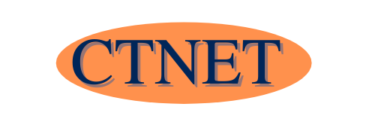In this beginners guide, we will explore how email allows you to communicate with other people on the internet due to the diverse nature of email providers and the various email applications. I have written a guide that is generic in nature. By the end of the guide, you will know what email is and how to open and send an email.
So What Is Email?
While Email is now a word in its own right, it was originally an abbreviation of electronic mail. I wanted to use the original name as it allows you to imagine an electronic system that sends email between one computer and another in a process similar to how mail is sent in the real world.
The email address acts as an address for your premise on your mail which the delivery company uses to ensure it is delivered to the correct address. An email address is made up of two parts yourname@domainname
Yourname is the name given to your email account and can be different from your real name. At the same time, the domain name is the organisation that provides and administers the email service for you. This organisation is likely to be one of the following.
- Your company, school or organisation’s name
- Your Internet Service Provider (ISP)
- An Online email provider such as Google Gmail and Microsoft Outlook
How Do I Get An Email Address?
It is pretty likely that you already have a personal email address. For a start, your Intenet Service Provider has likely created an email address as part of the services they provide to you.
You may also have created an email account if you use either the Microsoft Windows or Google Android operating systems on any of your devices or computers.
If you have no email address, you can sign up for an online email address with one of the online providers listed below. I would also advise you to consider doing the same if you only have an ISP email account. From personal experience, I know how difficult this makes switching suppliers.
- Gmail provided by Google also acts as a Google account, allowing you to access other Google services at no cost. Why don’t you read our beginner guide to Gmail?
- Outlook Provided by Microsoft. It will also create a Microsoft account for you. Why don’t you read our beginner’s guide to setting up Outlook?
- Yahoo. If you want to create an account with Yahoo. Who provides a range of internet services.
How Do You Access Your Email?
There are several ways you can access your email accounts. Such as online email account providers such as Gmail and Outlook. Many Internet Service providers will allow you to access your emails online via your web browser.
Microsoft Windows has a free email client, which can be used to access email. If you have a Gmail or Outlook account, a wizard will help you set up your email account for use with the application.
Android Smartphones and tablets come with the Gmail email application available to access your Gmail account. An Outlook app can is available on the Android Play Store.
How To Read An Email
While all email applications are slightly different, this process is the same on every email client that I have ever used.
- Select the email you want to read
- The email will appear either in the reading pane. Or the email will open
How To Send An Email
- Click on the new email button
- Enter the email address of the person you want to send it to. If you want to do a test enter your own email address
- Enter the email subject. Make it descriptive if you can
- Type in your email content
- Click send when you have finished your email

Conclusion
I wanted to make the Beginners guide as generic as possible, like the way email works and the underlying principles are the same. The look and feel of each email application might be different, but the functionality is very much the same.
If you have any questions on how email works, please feel free to ask them in the comments below, and I will try my best to answer them? If you have found this guide useful.
